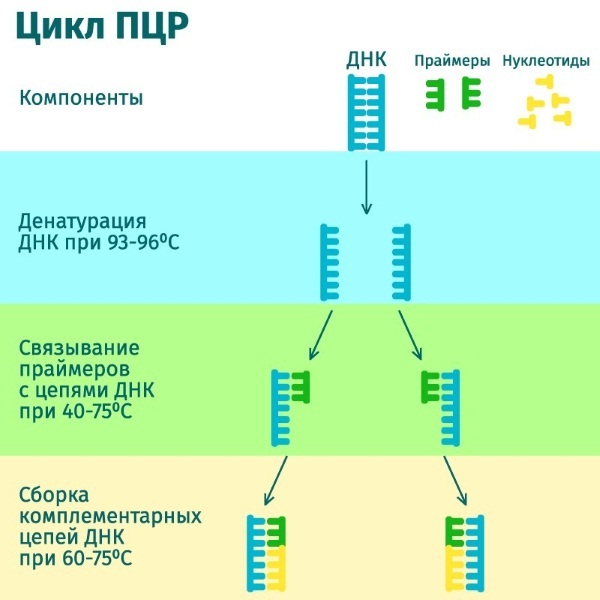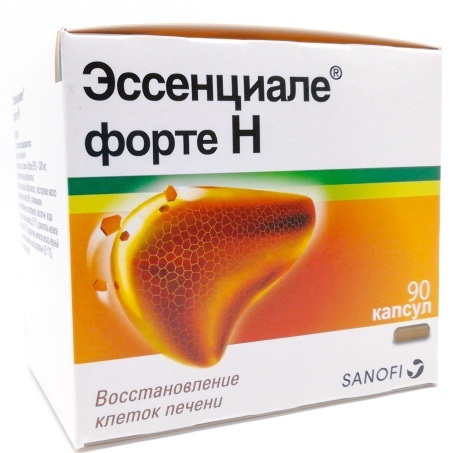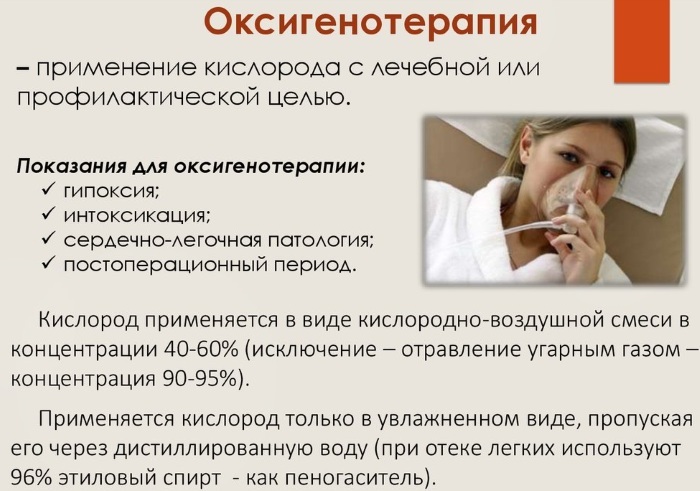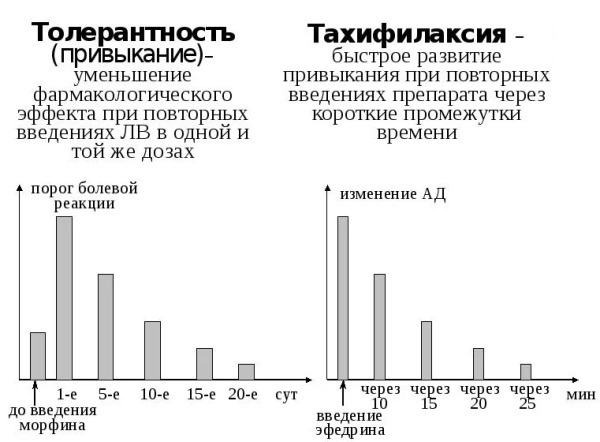Indicators of ALT and AST in the analysis of blood are markers of internal diseases. Norma these indicators in women varies by age and depends on the measurement method. The clinical significance of these enzymes have been discovered in the 50s. XX century, but now they lose their weight because of low specificity. Analysis typically prescribed to patients with liver disease.
The content of the article:
- 1 What is the ALT and AST
- 2 Normal values of ALT and AST in women
-
3 Why are the enzymes change
- 3.1 increased ALT
- 3.2 Increased rates of AST
- 3.3 Both markers elevated
- 3.4 Why hepatic transaminases are elevated in pregnancy
- 3.5 Causes of decreased hepatic enzymes
- 4 When the prescribed study
- 5 How to prepare for the study
- 6 As sampling occurs biomaterial from a vein
- 7 How to wait for the study results
- 8 Explanation responses analysis
- 9 Which could affect the accuracy of the study?
- 10 How much is a study where they spend
-
11 Drug treatment of diseases depending on the analysis results
- 11.1 Galstena
- 11.2 Gepabene
- 11.3 karsil
- 11.4 Essentiale
- 12 Diet and exercise
- 13 Folk remedies for the normalization of enzyme levels in the blood
- 14 Possible consequences of raising the level of enzymes
- 15 Video of normal ALT and AST
What is the ALT and AST
ALT (alanine aminotransferase) and AST (aspartate aminotransferase) - enzymes that are present in the tissues of many organs. They are involved in protein metabolism and the formation of amino acids, and the change in their levels in the blood is a marker of systemic diseases. Mostly enzyme activity observed in the healthy human blood.
The highest concentration of these compounds identified in the cardiac muscle. Thus, the activity of AST in the myocardium above 10 thousand. times than in blood serum.
Enzymes are also found in organs such as (in descending order of their content):
- liver;
- skeletal muscle;
- pancreas, spleen and lungs;
- brain;
- kidneys.
ALT is considered a marker of liver enzymes AST and - the myocardium. The cells are concentrated in the liquid contents and mitochondria (cellular "power" stations), respectively, and their relationship can be judged on the extent of tissue damage of these organs.
Normal values of ALT and AST in women
ALT, the rate for women over the age of which is listed in the following table in the article, often defined by the colorimetric method (kinetic UV method). Measurement of the concentration of the enzyme mixture produced by measuring the optical density of blood serum and the chemical reagent. Some laboratories use spectrographic and spectrophotometric methods.
Normal values for enzymes in the blood of women UV kinetic method are in the following ranges:
| Age, years | The maximum value of ALT U / L | The maximum value of AST, U / L |
| Newborn to 5 days | 49 | 97 |
| Newborns from 5 days to 6 months | 56 | 77 |
| < 1 | 54 | 82 |
| 1-3 | 33 | 48 |
| 3-6 | 29 | 36 |
| 6-12 | 39 | 47 |
| 12-17 | 24 | 25 |
| older than 17 | 31 | 31 |
Why are the enzymes change
ALT and AST - intracellular enzymes, so their content in the blood is normal to be small. If the damage and destruction of cells in tissues rich in these substances is their release, and they pass into the human circulatory bed.
However, these enzymes do not possess a narrow specificity (because there are a whole number of organs), so increasing their serum activity do not always correspond to the severity of the injury.

In women, the concentration of enzyme is slightly lower than that of men. Increased ALT and AST is also observed in certain physiological states in healthy subjects: the compliance with high-protein diet, with consumption of foods rich in sucrose, as well as donors, regularly give blood; under heavy exertion and malnutrition.
increased ALT
Increased ALT (otherwise the enzyme can retain both assays ALT, SGPT, Alanine aminotransferase) observed the following diseases and pathological conditions:
- Diseases of the hepatobiliary system:
- viral hepatitis;
- toxic liver damage as a result of poisoning poisons, medicaments, plant and fungal toxins, alcohol, after exposure to radiation;
- cirrhosis of the liver;
- jaundice occurring when obstruction of the bile duct as a result of occlusion of stone or spasm;
- liver cancer;
- steatosis (fat accumulation in the liver) observed in alcoholism, diabetes, thyroid abnormalities, and other metabolic disorders.
- Cardiovascular diseases:
- heart failure;
- myocardial infarction;
- rheumatic inflammation of the heart muscle, infection, or allergic nature;
- hemolytic disease (these enzymes are also found in red blood cells).
- Other violations:
- pancreatitis;

- shock;
- hypoxia (oxygen deprivation of tissue);
- severe injuries and extensive burns;
- muscular dystrophy;
- Infectious mononucleosis;
- delirium tremens;
- filariasis (parasitic infestation);
- pre-eclampsia (a sharp increase in blood pressure during pregnancy or childbirth);
- inflammation of skeletal muscles.
The most pronounced increase in ALT concentrations observed in liver diseases - it may exceed the rate of up to 100 times or more. The degree of increase in enzyme activity is proportional to the severity of this body. When viral hepatitis is to identify changes in the blood can be in the initial stages, when there is no jaundice.
Increased rates of AST
The value of AST in the blood increases in the following cases:
- Hepatobiliary system pathology:
- acute, malignant hepatitis, accompanied by massive hepatic necrosis;
- violation outflow of bile in cholelithiasis, opistorhoze, dyskinesia and biliary tract cysts, infectious and endocrine diseases;
- alcoholic hepatitis;
- tumor in the liver.
- Diseases of the cardiovascular system:
- acute myocardial infarction;
- heart failure;
- stroke;
- thalassemia (hereditary disease associated with impaired production of hemoglobin);
- hemolytic anemia.
- Other pathologies:
- Infectious mononucleosis;
- pulmonary embolism;
- pulmonary tuberculosis;

- inflammatory diseases of the muscle tissue;
- heatstroke and extensive burns;
- muscular dystrophy;
- infarction of the small intestine;
- infectious diseases, sepsis;
- metabolic disorders - hypothyroidism (decreased production of thyroid hormones), lactic acidosis, obesity, Wilson's disease, Gaucher.
Both markers elevated
ALT rate in women over the age of 17 years, after which does not change significantly with AST increases simultaneously with liver disease (hepatitis, cirrhosis).
This feature is also observed in diseases such as:
- acute pancreatitis;
- inflammation of the gallbladder;
- Infectious and parasitic diseases (SARS, toxoplasmosis);
- extensive burns.
Liver cirrhosis AST levels are usually higher than the ALT. The activity of enzyme of the first kind with lesions of the body grows faster than the second.
Why hepatic transaminases are elevated in pregnancy
In pregnant women, raising the level of AST and ALT can be physiological, related to increased load on the liver to remove the fruit waste. If in the course of the survey was not confirmed any of the above diagnoses, such a condition does not require treatment. However, increasing the activity of enzymes could be evidence of the development of pathology.
The most common of these pregnant women are:
- Cholestatic hepatotoxicity, wherein the pathological changes occur in the liver is broken and the formation and excretion of bile. Risk factors are: the use of oral contraceptives prior to conception, multiple pregnancy, IVF. Often, this disease also occurs on a background of infections - viral hepatitis, infection with Epstein-Barr virus, cytomegalovirus.
- Conflict Rh factor of blood between mother and fetus.
- Cholecystitis, and cholestasis.

- Renal insufficiency.
With increasing rates of AST and ALT in the 10-20 times need to be screened for the presence of viral hepatitis and autoimmune liver disease.
Causes of decreased hepatic enzymes
Decreased activity of alanine aminotransferase and aspartate aminotransferase may occur in the following cases:
- in renal failure;
- malaria;
- during pregnancy;
- with a deficiency of vitamin B6 in the body;
- by repeated dialysis - blood cleansing through a special machine.
When the prescribed study
Analysis to identify the level of ALT and AST is assigned in the following cases:
- Identification of myocardial infarction, which is not detected on an electrocardiogram. In this ACT increases in the first 4-6 hours after the attack and normalized on day 3-7. About severe disease show: ALT above normal in 10 and more times above normal AST 20 times or more.
- Diagnosis of liver pathologies. The ratio of AST to ALT in this case, as a rule, less 1.33.
- A survey of people exposed to patients with viral hepatitis.
- Checking the status of the donor before blood donation.
- The monitoring of certain medications and their effect on the liver.
Direction on the analysis may give the therapist, and narrow specialists - a cardiologist, a gastroenterologist, surgeon, hematologist.
How to prepare for the study
To obtain reliable results, the following rules for the preparation for delivery of the blood must be observed:
- Last meal - for 8-14 hours prior to taking the biomaterial (after a period of overnight fasting). Sometimes the doctor may prescribe a delivery day analysis, in this case, the last prem light meal - 4 hours. Water you can drink.
- 1 day prior to visiting the following factors should be excluded lab:
- increased physical activity (including sports training);
- emotional distress;
- alcohol intake.

On indicators transferases can also affect the reception of certain medications (listed below), so you need to notify the doctor and agree with them their temporary suspension.
As sampling occurs biomaterial from a vein
ALT and AST are determined in venous blood. Normal female age must be indicated in the medical form, together with the actual value obtained.
The procedure for biomaterial sampling standard and comprises the following steps:
- Examinee is seated on a chair, put his left hand on the table.
- Laboratory puts a tourniquet above the elbow to ensure that the flow of blood to the vein. The patient is asked to work hand (several times to compress and unclench the fist).
- Puncture site (elbow bend) is treated with an alcohol cotton swab or special cleaning cloth.
- Laboratory introduces disposable needle into a vein and produces a blood sample in a test tube. Tourniquet weaken.
- After filling the needle tube is removed and the puncture site again applied napkin or tampon. It must be good to press for 5-10 minutes to stop the bleeding completely.
How to wait for the study results
The assay results are usually ready within 1 business day. If through the lab passes a large flow of patients, the study of blood can take more time.
Explanation responses analysis
Despite the fact that the activity of ALT and AST is not specific to the liver pathology, yet the main purpose of the study is to identify the pathologies of this particular organ.
Joint evaluation of AST and ALT helps diagnose myocardial infarction. However, the diagnosis can only be made to these two criteria. They are used in the first stage of diagnosis. The final decision doctor can only decide on the basis set of instrumental and laboratory data.
In cirrhosis liver enzyme levels can vary from the upper limit of normal to 4-5-fold increase, while AST above. In the presence of malignancies in the body, their concentration is generally greater than 5-10 times the norm.
To clarify the pathology of liver specific analysis is performed for the presence of hepatitis B virus (ELISA, PCR), and and ultrasound of the abdomen, which allows us to estimate the degree of degenerative changes in the body.
Which could affect the accuracy of the study?
On the results of the analysis can affect the violation of the rules of preparation to their delivery, as well as the reception of the following medications:
- antibacterials (sulfonamides, penicillins, tetracyclines and others);
- barbiturates (phenobarbital, barbital, Butizol and others);
- opiates, anesthetic agents;
- drugs for reducing blood lipid concentration (simvastatin, atorvastatin, lovastatin, etc.);
- drugs containing acetylsalicylic acid, indomethacin, and other hepatotoxic components;
- Oral contraceptives and other hormonal agents - testosterone, androgens, progesterone.
How much is a study where they spend
Blood test for AST and ALT may be held in any certified medical laboratory, both in the budget and in the commercial.
Average prices are in the following range:
- assessment of the level of ALT - 90-150 rubles .;
- level assessment of AST - 150-250 rub .;
- the taking of a blood vein (charged separately) - 150-250 rub.
Drug treatment of diseases depending on the analysis results
Tactics treatment at elevated AST and ALT values depends on the underlying cause of the this symptom and severity. Thus, when administered pulmonary viral hepatitis cholagogue and multivitamin. If hepatitis occurs in severe form, it is necessary to use antiviral drugs, hormone, detoxification, antibacterial therapy.
One of the major groups of medicines used for all liver lesions are gepatoprotektory:
- based on silibinin (Karsil, Silibor, Siliverin, Gepatofalk and other means);
- on the basis of essential phospholipids (Essentiale forte Essentsikaps, Phosphogliv and others).
Galstena
Galstena - homeopathic remedy which the main components are:
- milk thistle, within which there are substances that contribute to the restoration of the liver cells;
- taraxacum officinalis, which possesses choleretic effect grass;
- celandine (choleretic and bactericidal effect in pathologies liver and gall bladder);
- sodium sulfate, stimulating epithelial cells biliary tract and pancreatic ducts;
- phosphorus, has an inhibiting effect on the growth of cancer cells.
It is used in combination therapy for the treatment of hepatitis, cholecystitis, pancreatitis The following single dosage (per day - no more than 4 doses):
- Adults - 10 droplets;
- children:
- 5-12 years - 5-7 drops;
- 1-5 years - 2-4 drops;
- to 1 g - 1 drop.
Gepabene
The main active components Gepabene capsules are spotted thistle fruit and herbs dymyanki, which contains in its composition of alkaloids that contribute to the normalization of the gallbladder and its ducts.
This drug is plant-based is prescribed only for adults as part of combination therapy with chronic hepatitis and toxic liver injury, as well as to eliminate biliary dyskinesia ways. In acute hepatobiliary diseases, it is contraindicated.
Gepabene take three times a day 1 capsule, if necessary, the maximum daily dose can be increased to 6 capsules.
karsil
Karsil drug is also made of plant-based. The main component dragees and capsules is the dry fruit extract spotted thistle, facilitating the rapid restoration of liver cells and metabolism. Unsaturated fatty acids in the composition of the extract can also help reduce the level of "harmful" cholesterol.
This drug is prescribed for liver damage of any etiology, as well as for prevention of atherosclerosis.
Dosage regimen:
- Adult - 1-2 tablets (dragees) 3 times a day;
- for children 5-12 years - 3 mg per 1 kg of body weight in 3 divided doses per day.
Essentiale
Essentiale produced as sachets, capsules and solution for intravenous administration. The basis of this preparation constitute essential phospholipids which promote restoration of cell membranes in the liver tissues and stimulate the activity of enzymes.
The capsules are administered to subjects older than 12 years (body weight should be more than 43 kg) of 2 pieces. 3 times a day. The main contraindications relates intolerance and soybean phosphatidylcholine.
Diet and exercise
ALT rate in women over the age of which is listed in the article, it is normalized after treatment of the underlying disease. An important part of the complex therapy is diet.
Patients with liver disease should follow these recommendations in the diet:
- in the mild form of the disease - a table №5 by Pevsner, if severe - №5a;
- It shows excessive drinking, which reduce after urine will light;
- the combination of cirrhosis with ascites reduce the use of salt;
- if the infectious nature of the disease after surgery, and in the daily diet should be at least 1.8 g protein per 1 kg of patient weight (protein diet).
Features table №5 are as follows:
- meal - at least 5 times a day;
- preferably steaming food and boiled;
- completely eliminated alcohol, fatty foods (animal fats), rich broth, spicy, salty, smoked, fried, pickles, fresh yeast cakes, vegetables, irritating the mucous membrane of the gastrointestinal tract (radish, radish, onion, cranberries and etc.);
- allowed cereals, lean meat and fish, pasta, vegetarian soups, vegetables and fruits (except sour).
In the acute phase shown bed rest, then - polupostelny in remission - moderate exercise.
Folk remedies for the normalization of enzyme levels in the blood
In folk medicine, the following recipes are used for the normalization of the liver:
- Tea made from milk thistle. 1 h. l. powder plant seeds or herbs pour 1 tbsp. of boiling water for 20 minutes. Tea drink ½ st. morning before breakfast, before lunch and dinner, for 2 weeks, then take a break.
- 1 tbsp. l. untreated oat grains pour 0.5 L of pure water and leave overnight. Morning boil in the same water for 2 minutes, and then to slow fire for 5 minutes, covered with a lid. Turn off the heat, leave for 10 minutes. Strain and drink ½ a means of Art. 3 times before meals for 10 days.

- Separate the corn silk on 2 large cobs. Pour 1.5 l of boiling water, for 20 minutes, then drain. Infusion drink as tea throughout the day. The course of treatment - 1 month, then break for 2 months.
- Upon receiving corn stigmas recommended to continue therapy tsitvarnaya Artemisia extract, which is prepared in the same manner. It is taken within one month of ½ st. 2 times a day.
Possible consequences of raising the level of enzymes
ALT rate in women over the age of which must not exceed 31 units for patients older than 17 years, does not in itself pose a threat to health. Complications and prognosis depend on the type and severity of the disease diagnosed its course. So, if this condition is caused by physiological causes, treatment is not required, and the activity of AST and ALT levels normalized independently.
Myocardial infarction one of the most serious complications of a heart failure, and liver cirrhosis - the development of carcinoma and liver failure, and leads to death.
Cholestatic hepatotoxicity in pregnant women can cause the following negative effects:
- fetal hypoxia;
- premature birth and miscarriage;
- postpartum hemorrhage.
ALT - an enzyme that serves as one of the key markers of pathologies of the liver, pancreas, heart and other organs. Exceeding the normal range in women over the age require additional instrumental and laboratory diagnostics to identify the reasons that caused the deviation.
Modifying enzyme activity may also be due to physiological reasons and taking certain medications, however, in some cases re-renting carried analysis.
Registration of the article: Vladimir the Great
Video of normal ALT and AST
Norma ALT and AST in blood analysis:


